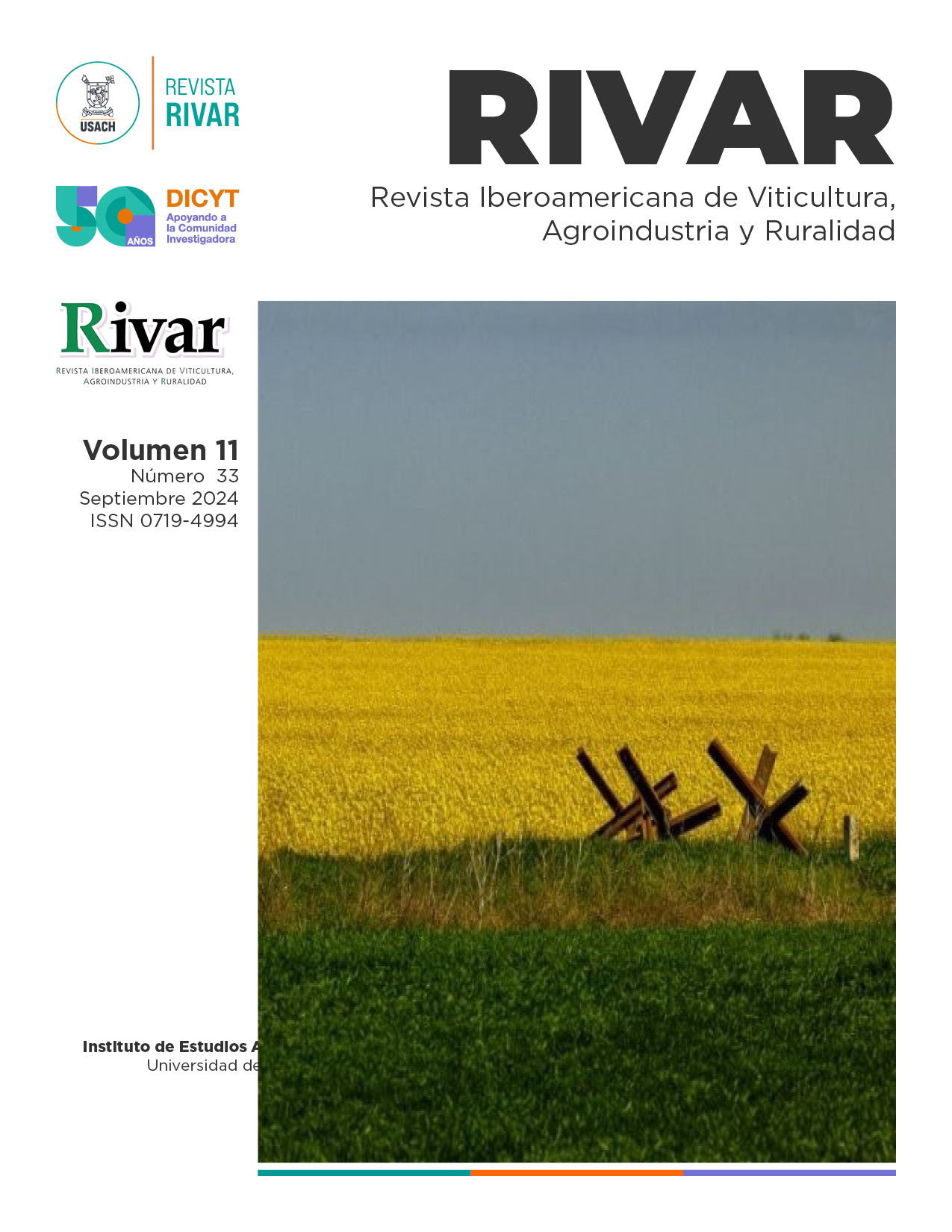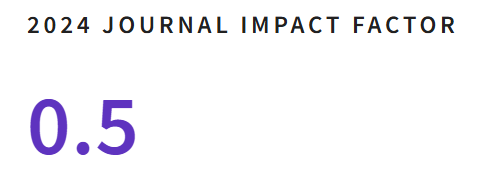Land Grabbing, Dispossession, and Proletarianization: Twenty Years of Agrarian Change in Canelones, Uruguay
DOI:
https://doi.org/10.35588/rivar.v11i33.6191Keywords:
family production, agrarian change, land grabbing, decomposition, proletarianizationAbstract
In this article, we examine the processes of agrarian change that occurred between 1990 and 2011 in the Department of Canelones, Uruguay, using available General Agricultural Censuses. We aim is to analyze the processes of social disintegration, concentration, land grabbing, and proletarianization. We seek to describe and understand a process that differs from those studied in agribusiness territories like the western coast of our country and other sectors such as agriculture, forestry, livestock, and dairy farming. In the case of Canelones, the historical and structural significance of family production, along with the majority focus on domestic market-oriented sectors such as horticulture, poultry, pigs, and vineyards, sets it apart and justifies the relevance of our analysis. The results highlight the need to delve deeper into the study of land grabbing, concentration, and proletarianization in agriculture. The evidence does not support a simplistic and mechanistic opposition between family production and these processes. It is crucial to acknowledge the prominent role of family production in contemporary Uruguayan agrarian change, as understanding it is a prerequisite for addressing the issues it entails.
Downloads
References
Arbeletche, P. (2019). El agronegocio en Uruguay: Su evolución y estrategias cambiantes en el siglo XXI. RIVAR, 7(19), 109-129. https://doi.org/10.35588/rivar.v7i19.4355
Archetti, E.P. (1981). Campesinado y estructuras agrarias en América Latina. CEPLAES.
Bin, D. (2018). So-called Accumulation by Dispossession. Critical Sociology, 44(1), 75-88. https://doi.org/10.1177/0896920516651687
Bisang, R., Anlló, G. y Campi, M. (2008). Una revolución (no tan) silenciosa. Claves para repensar el agro en Argentina. Desarrollo Económico, 48(190), 165-207.
Bonefeld, W. (2011). Primitive Accumulation and Capitalist Accumulation: Notes on Social Constitution and Expropriation. Science & Society, 75(3), 379-399. https://doi.org/10.1521/siso.2011.75.3.379
Borras, S.M., Franco, J.C., Kay, C. y Spoor, M. (2014). El acaparamiento de tierras en América Latina y el Caribe: análisis desde una perspectiva internacional amplia. En F.S. Baquero y S. Gómez (Eds.), Reflexiones sobre la concentración y extranjerización de la tierra en América Latina y el Caribe (pp. 15-68). FAO. https://www.fao.org/3/i3075s/i3075s.pdf
Carámbula, M. (2015). Imágenes del campo uruguayo en clave de metamorfosis. Cuando las bases estructurales se terminan quebrando. Revista de Ciencias Sociales, 28(36), 17-36.
Carámbula, M. y Oyhantçabal, G. (2019). Proletarización del agro uruguayo a comienzos del siglo XXI: Viejas y nuevas imágenes de un proceso histórico. Eutopía Revista de Desarrollo Económico Territorial, 16, 161-180. https://doi.org/10.17141/eutopia.16.2019.4107
Cardeillac, J. (2019). Las transformaciones del agro uruguayo entre 1990 y 2011 desde una perspectiva de la estructura agraria: Descomposición de la producción familiar, acaparamiento de tierra por centralización de capital y polarización. [Tesis de doctorado]. Universidad de la República.
____. (2020a). La estructura agraria del Uruguay entre 1990 y 2011: Acaparamiento de tierras y descomposición de la producción familiar. Revista Interdisciplinaria de Estudios Agrarios, 52, 1-24. https://www.ciea.com.ar/web/wp-content/uploads/2021/03/1-Cardeillac.pdf
____. (2020b). Un polarizado Uruguay: Tendencias en la estructura agraria 1990-2011. Revista de Economia e Sociologia Rural, 58(4), e210744. https://doi.org/10.1590/1806-9479.2020.210744
____. (2021). Acaparamiento de tierras, descomposición y relevo generacional:la estructura agraria uruguaya entre 2000 y 2011. Estudios Rurales, 11(22). https://doi.org/10.48160/22504001er22.70
Cardeillac, J. y Juncal, A. (2017). Estructura agraria y trabajo en un contexto de cambio: el caso de Uruguay. Mundo Agrario, 18(39), e072. https://doi.org/10.24215/15155994e072
Chayanov, A.V. (1966). On the Theory of Peasant Economy. The American Economic Association and Richard D. Irwin, Inc.
Gereffi, G., Korzeniewicz, M. y Korzeniewicz, R.P. (1994). Introduction: Global Commodity Chains. En Commodity Chains and Global Capitalism (pp. 1-14). Praeger Publishers.
Gras, C. y Hernández, V. (2013). Los pilares del modelo agribusiness y sus estilos empresariales. En C. Gras y V. Hernández (Coords.), El agro como negocio. Producción, sociedad y territorios en la globalización. Biblos.
Hall, D. (2013). Primitive Accumulation, Accumulation by Dispossession and the Global Land Grab. Third World Quarterly, 34(9), 1582-1604.
Hall, R. et al. (2015). Resistance, acquiescence or incorporation? An introduction to land grabbing and political reactions “From Below”. The Journal of Peasant Studies, 42(3-4), 467-488. https://doi.org/10.1080/03066150.2015.1036746
Harvey, D. (2005). El “nuevo” imperialismo: acumulación por desposesión. Socialist Register 2004, 99-129. http://biblioteca.clacso.edu.ar/clacso/se/20130702120830/harvey.pdf
Mann, S. y Dickinson, J.M. (1978). Obstacles to the Development of a Capitalist Agriculture. Journal of Peasant Studies, 5(4), 466-481. https://doi.org/10.1080/03066157808438058
Marx, K. (1965). Capital A Critique of Political Economy. Book One: The Process of Production of Capital. Progress Publishers.
Murmis, M. (1986). Tipología de pequeños productores campesinos en América Latina. En M. Murmis, Transición tecnológica y diferenciación social. Instituto Interamericano de Ciencias Agrícolas.
Oyhantçabal, G. y Narbondo, I. (2018). Land Grabbing in Uruguay: New Forms of Land. Canadian Journal of Development Studies, 40(2), 1-19. https://doi.org/10.1080/02255189.2018.1524749
Piñeiro, D. (1985). Formas de resistencia de la agricultura familiar: El caso del N.E. de Canelones. Banda Oriental.
____. (2012). Land Grabbing: Concentration and “Foreignisation” of Land in Uruguay. Canadian Journal of Development Studies, 33(4), 471-489. https://doi.org/10.1080/02255189.2012.746216
Piñeiro, D. y Cardeillac, J. (2017). The Frente Amplio and Agrarian Policy in Uruguay. Journal of Agrarian Change, 17(2), 365-380. https://doi.org/10.1111/joac.12213
Saavedra, C. y Fagúndez, D. (2013). El Censo General Agropecuario 2011 y la nueva realidad agropecuaria. Revista del Plan Agropecuario, 145, 64-70.
Stavenhagen, R. (1975). Las clases sociales en las sociedades agrarias. Siglo XXI.
Van Der Ploeg, J.D. (2010). Nuevos campesinos: Campesinos e imperios alimentarios. Icaria.
Vergara-Camus, L. y Kay, C. (2017). Agribusiness, Peasants, Left‐wing Governments, and the State in Latin America: An Overview and Theoretical Reflections. Journal of Agrarian Change, 17(2), 239-257. https://doi.org/10.1111/joac.12215
Downloads
Submitted
2023-06-11Published
Versions
- 2024-09-09 (2)
- 2024-02-29 (1)









